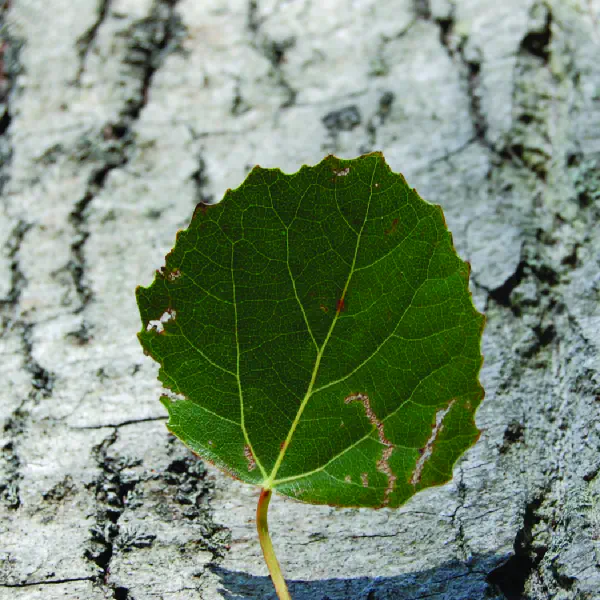Populus tremuloides
Table of Contents

Scientific Classification
| Kingdom: Plantae |
| Phylum: Tracheophyta |
| Class: Magnoliopsida |
| Order: Malpighiales |
| Family: Salicaceae |
| Genus: Populus |
| Species: Populus tremuloides |
Conservation Status
Identifying Features
Quaking aspen is a medium size tree, growing up to 70’ tall.
Their bark is smooth and an off-white color. While at first glance their bark appears similar to paper birch, it does not peel in the way a paper birch does.
Quaking aspen leaves are alternate and simple. They are between 2-4" long, rounded with a point, and have long flattened leafstalks. They are fine-toothed. With the fine teeth and round shape, the leaves are quickly distinguished from others in this genus.
Habitat & Range
Quaking aspen are found throughout the Northeastern United States, Great Lakes Region, Alaska, some ranges in the Western United States, and much of Canada. They can live in a wide variety of habitats, and can be common in recently disturbed areas.
Behavior
Quaking aspens can reproduce by root suckers, or shoots coming off of the roots of one tree. In this way they can spread across large areas of land.
Life Cycle
The seeds of this tree are cottony, in green capsules that hang in clusters.
Featured image by James Dake.

